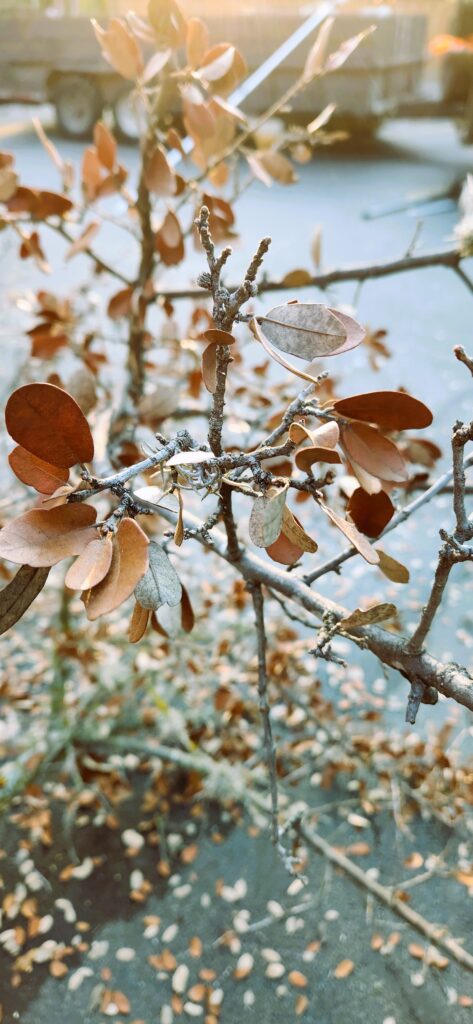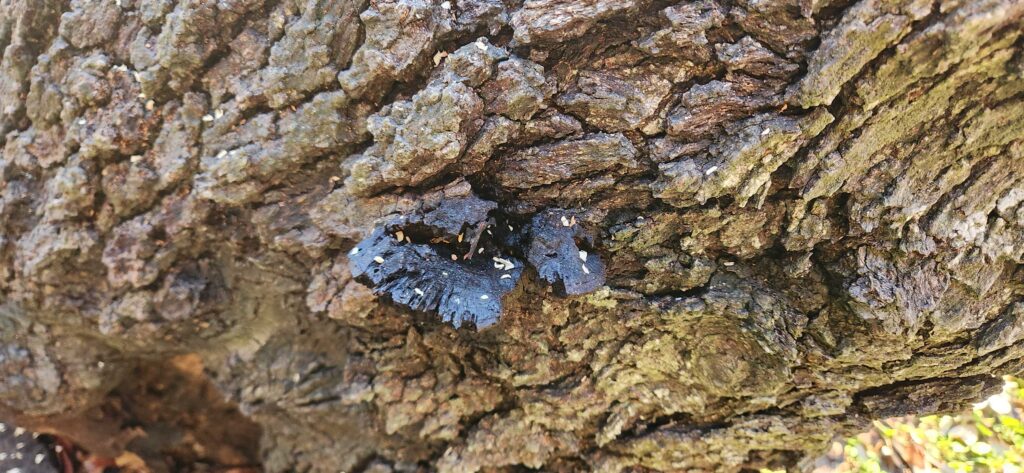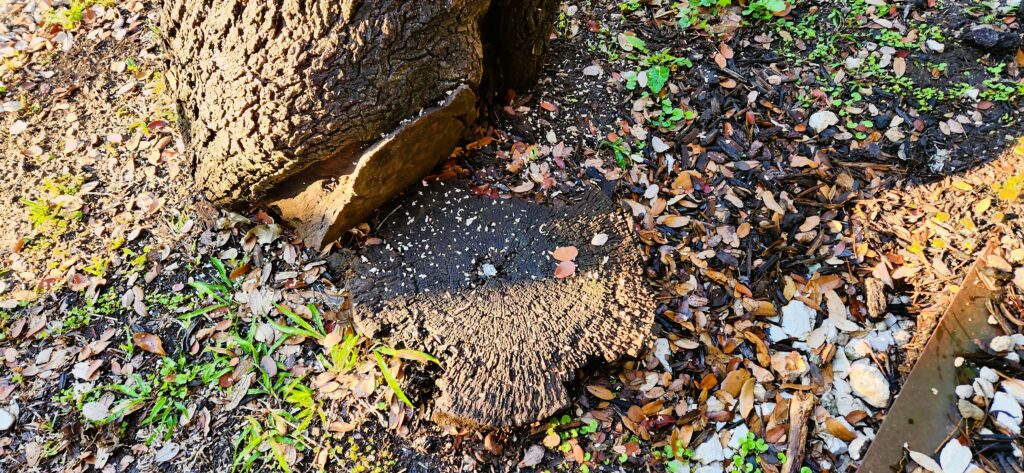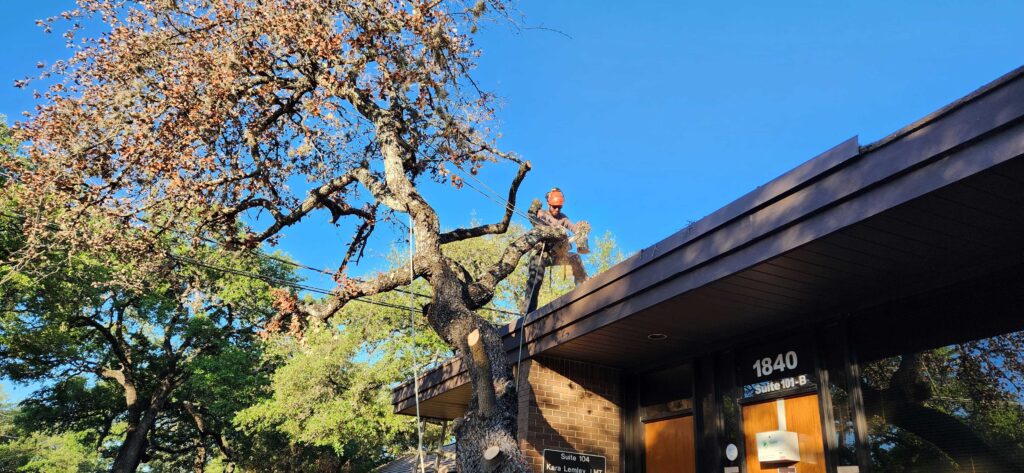By Lucas Rumancik, Certified Arborist
Suddenly, a healthy Live Oak tree in Castle Hills turned brown. Located in the Woods of Castle Hills office complex, the tree looked increasingly vulnerable to limb or trunk failure. For no apparent reason. At first the property managers suspected transitory freeze damage. Lower temperatures had damaged much of the landscaping around San Antonio Texas this year so they waited. Spring came. Rains came. Still, there were no new signs of growth. The brown leaves signaled a problem for the property managers. The tree location was right where medical office clients entered and exited the building. To make matters worse, the tree was leaning toward the path customers took to enter the building.
Brown Leaf Evaluation
Canopy Tree Service was called in to access the situation. At the site visit, Canopy Tree Service noted the entire canopy was covered in brown leaves. Live Oaks generally stay green year round so this was quite unusual. Our Certified Arborist told the property manager their concerns about the brown canopy were justified. The City of Castle Hills was notified of the tree’s unhealthy state.
At the site visit, after noting the brown condition of the canopy, the Certified Arborist circled the base of the tree. He noted the presence of a dark-colored fungus at the base of the tree. These fungus usually are associated with existing or future tree mortality in the same way that circling buzzards might indicate recent road kill. Finally, some time ago, this tree, which had two trunks, apparently lost one of its trunks. This event definitely impacted the tree; however the tree seemed to do well for some time despite the limb loss setback.
The final blow to the tree was the invasion of pinhead size beetles leading to sudden death. Sudden Oak Death is more common in California and Oregon where rain and wet conditions are more frequent, but trees in Bexar County can suddenly die as well. Canopy recommended the tree be removed for safety reasons and wrote a letter to the City of Castle Hills documenting the need to remove this 18″ tree. The City of Castle Hills hastily approved the request.



Tree Removal
With the tree removal permit in place, the next step was to begin dismantling the tree. Cones were placed to block medical office traffic around the tree fall zone. One climber positioned himself at the top of the tree while another on the ground secured the large limbs with ropes. The third worker fed the branches into a chipper. The goal was to start at the top and cut off branches at the top of the tree and work their way down until only a few remained at the base. Our climber in this photo was wearing chainsaw resistant pants, a climber’s helmet and glasses that protect against wood chip spray. If you need an experienced tree removal crew to protect your roof during removal, please read further about our tree removal service.

Cut and fell remaining branches and trunk
The remaining branches are cut off one by one until only a few remain at the base of the trunk. The climber then cuts the trunk until it is a short stump that can be ground with a stump grinder or left to decay naturally.
Remove debris from site
Finally, all debris are removed from the site. The tree debris are run through a chipper which creates a high heat environment to kill bugs and other pests and then recycled to reduce landfill waste. The area is cleaned up with leaves and other debris blown off the roof and the landscape beds cleaned up and parking areas made clean.
Lucas Rumancik is a Certified Arborist and a Climbing Arborist with five years of experience with Canopy Tree Service.